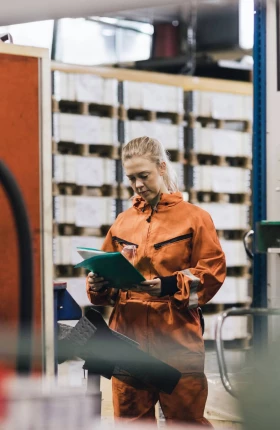For years, sustainable innovation in food and consumer products has been dogged by goods like the paper straw and other “sustainability forward” items. Paper straws were presented as more eco-friendly and safer to use than plastic. But they got soggy, and people didn’t like them. It was a terrible consumer experience and ruined the reputation of sustainable products. Worse, paper straws were largely a red herring: They’re a minute part of the plastic waste and biodiversity issues. So they tainted the reputation of sustainable products, made very little impact, and weren’t used by consumers, who went back to plastic.
Now, we’re at a major turning point. A lot of things are coming together right now: innovation, consumer education, economics, large-scale production, better branding, and lots of investment. Just over the past couple of years, we’ve started to see what Tesla did for electric cars play out in a very broad range of sustainable consumer products. Innovations are reaching mass acceptance in the marketplace because they are meeting people’s core needs.
Let’s talk about food, an area I’ve spent a lot of time on in my work in the retail and consumer sectors. Plant-based meat such as Beyond and dairy alternatives such as Oatly are becoming more ubiquitous on restaurant menus and grocery store shelves. These innovators have done a great job of meeting the core needs of consumers—providing good taste, texture, color, consistency, and shelf life—while also offering sustainability benefits.
Why this acceleration in sustainable food innovation now? One key reason, I think, is that many CEOs are seeing the light. Existential crises like climate change and the pandemic are making corporate leaders realize they must do something to help the world around us regenerate and preserve ecosystems. They will have to transform their companies to reach their 2025 or 2030 emission targets, deadlines that are fast approaching. But they also see opportunities that the coming wave of sustainable innovation can bring. A recent study from NYU Stern’s Center for Sustainable Business found that more than half of the growth in consumer products over the past five years has been driven by sustainable products. Retail executives I work with want to capture more of this growth by adopting winning product innovation ahead of competitors.
We’ve started to see what Tesla did for electric cars play out in a very broad range of sustainable consumer products. Innovations are reaching mass acceptance in the marketplace because they are meeting people’s core needs.
The main reasons sustainable products are taking off now, however, is because they’re hitting the mark with consumers. Companies are doing a better job of meeting consumer core needs like taste and health, and making the engine under the hood sustainable by innovating materials. And production is finally reaching a scale that makes sustainable products cost-competitive.
Indoor farming is a great example. Until recently, growing crops and potentially seafood indoors to reduce the harmful environmental impacts of large-scale farming seemed like a pipedream. It was very expensive and hard to scale. Now, we’re starting to see innovation that makes indoor farming a lot cheaper. Warehouses with rows and rows of lettuce, greens, and herbs that are grown with precisely arranged LED lighting, cutting-edge robotics, irrigation systems that use 95% less water, and renewable-energy-powered facilities that cover 97% less land. Moreover, indoor farming allows products to be grown more locally. This is particularly important given that 90% of the US’s leafy greens productions today is in the water-stricken states of Arizona and California. And the greens are fresher, crisper, tastier, and more nutritious than the fragile produce transported over long distances. While these indoor-grown products may cost more at the grocery store today, that’s not necessarily because they cost more to grow but because consumers are willing to pay a premium for the quality and health benefits.
I’m also excited about the huge progress on the horizon in packaging design that delivers efficiency and simplicity, with non-plastic or recyclable materials. For some products, that will be difficult. We still need plastic packaging for produce, for example, because it’s still the best barrier against bacteria. But the availability of paper, pulp fiber, and bagasse for other goods, and the economics of using it, are improving. And over the next few years, we’ll see many other types of more sustainable packaging innovation start to scale up and become much cheaper.
The Sustainable Advantage: Build lasting impact through sustainability
We’ll also see many more beverage companies switch from plastic bottles to aluminum, which is much more recyclable than plastic. And because aluminum is a high-cost material, there is more incentive to reuse it. In fact, something like 75% of all aluminum ever produced is still used today; for plastic, that’s much less than 10%.
Granted, a lot more innovation is needed. Take plant-based meats, which may be high in sodium or include ingredients with environmental downsides. But a lot of innovation is coming down the pike that will hit grocery stores very soon. I give laboratory-grown “green” meats around five years. Imagine being able to grow sausages, chicken fingers, and hamburger in a net-zero vat on little land without killing animals. The technology’s there and it’s been done at small scale. It’s just a matter of scaling the benefits and then ramping it up and navigating the regulatory-approval process. When it arrives, it will significantly change agriculture. I also see sustainable rice, corn, and wheat being grown with regenerative agricultural techniques that require far less water and fertilizer—leading to truly sustainable products on our shelves.
So, all in all, there’s lot of reason to be optimistic that 2023 will be an exciting year for innovation in sustainable foods.








